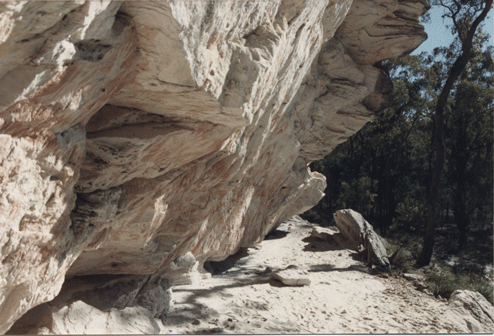
Sandstone cliffs; a cultural site.
This area was occupied by three groups of Aboriginal people, the Iningai to the west of the Range, the Yagalingu/Jagalingou to the east and Bidjara on the south-eastern fringe. Their lives were disrupted by the arrival of European settlers with both conflict and cooperation occurring. Some Aboriginals worked on pastoral stations but during the first decades of the twentieth century, many of those remaining in the area were removed to missions, generally far from their own land. Two sites of cultural significance remain in the area.
Sir Thomas Mitchell was the only widely recognised explorer to enter the Alpha-Jericho area. In 1845, he followed part of the Belyando River northward in his unsuccessful search for a great river flowing to Australia’s northern coastline. However, it was almost twenty years before pastoralists seeking land to settle reached the area.
The first successful licences for land were issued in 1863 and before the end of the year about 1,950km2 were claimed by four men. Pastoral expansion continued until all suitable land was grazing either sheep or cattle on large holdings. The division of the large land holdings (up to 4,202.5km2) after 1884, to form smaller pastoral stations ranging in area depending on their location and other factors, increased the numbers of graziers and station workers. Attempts to establish agriculture around the towns from 1890 to 1923 failed without reliable water supplies and few close markets.
Three towns emerged as terminus towns for the building of a railway line west from Rockhampton, an east coast port. Pine Hill, the first terminus in the area, envisaged as a major settlement on the western side of the Drummond Range declined to become a railway siding after World War II. Alpha and Jericho emerged from their time as railway terminuses to become centres for the surrounding pastoralists. Alpha also developed as a railway depot.

Alpha railway depot
During the mid-1960s (data for this study ends at this time) a drift to city and coast began a continuous decline in the population. Cattle replaced sheep, requiring fewer employees, and services were regionalised to be located in larger towns.
